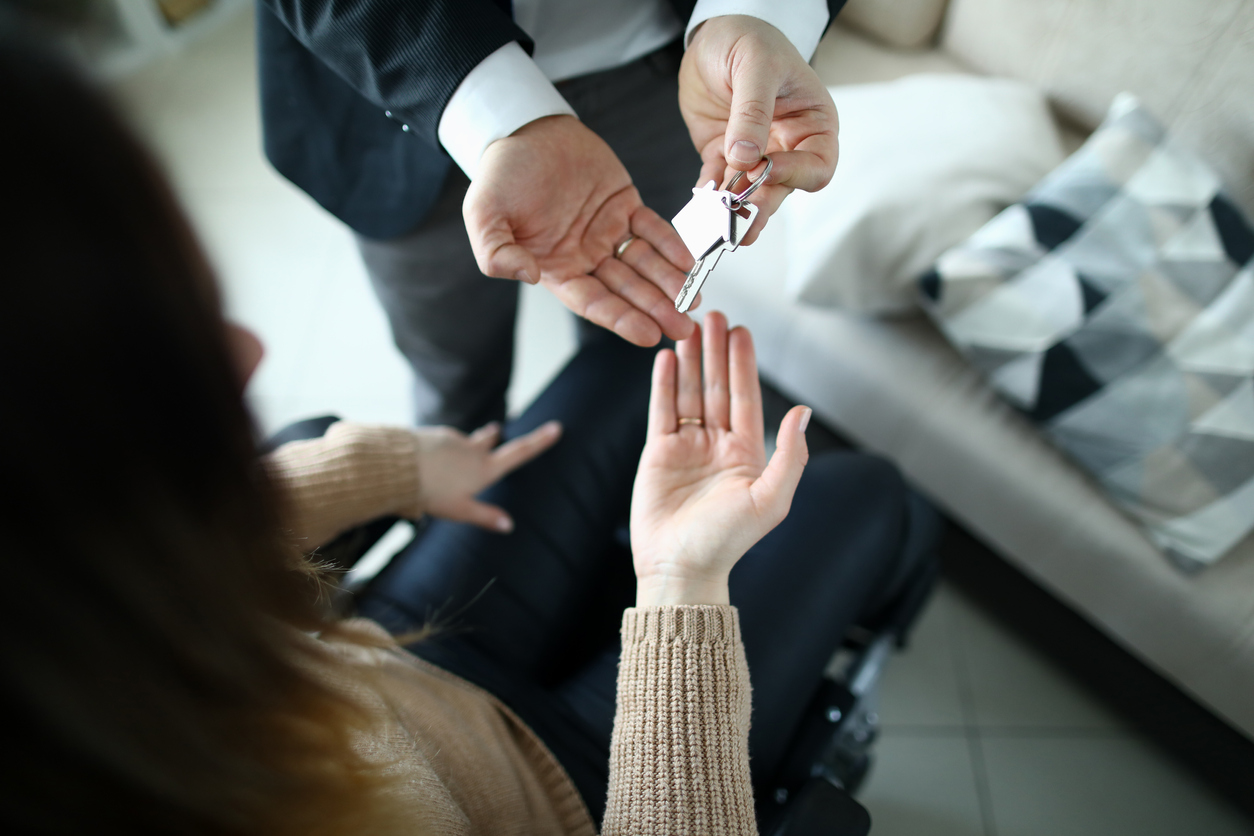What is it?
Specialist Disability Accommodation (SDA) is housing for participants of the National Disability Insurance Scheme (NDIS) who need specialist solutions and support to cater for their needs.
The funding is available to help participants build, buy or rent specialist accommodation, providing opportunities to live independently or in share homes, with onsite access, where needed, to care provision such as Onsite Shared Support (OSS) or Supported Independent Living (SIL).
Who is eligible?
It is estimated about six per cent of NDIS participants require SDA, totalling about 28,000 people across Australia. These are people with a high need for constant or immediately-available support, and those who have extreme difficulty with mobility and self-care.
To find out if you’re eligible for SDA funding, visit the NDIS website.
Who provides the housing?
While the NDIS provides the funding to eligible participants for these homes, SDA providers, like AHA, deliver the housing. Our focus is on building brand new, purposefully-designed homes that meet the needs of individuals who wish to live as independently as possible.
How can the funding be used?
The funding goes to the ‘bricks and mortar’ of a home and is paid to the SDA provider, such as AHA, who is the builder or landlord of an SDA-approved property.
The amount of funding a participant receives is calculated based on their personal SDA eligibility, in which is a decision the NDIA makes based on a person’s functional capacity. Participants receive their funding amounts from the NDIA eligibility process, and are then able to ‘go shopping’ to find an SDA home they like with the amount they are provided.
AHA leases ready-built homes that have been designed to meet the SDA requirements for people living with High Physical Support needs. We can make modifications, and incorporate additional functions and equipment, to further customise each home for the tenant depending on their personal circumstances and NDIS funding.
As an SDA tenant, you must pay a ‘reasonable rent contribution’ to the property owner, which is the equivalent of 25% of the Disability Support Pension, plus 100% of the Commonwealth Rent Assistance.
NDIS participants and their families can also build or purchase their own specialist disability accommodation.
If you want to build and/or own your own SDA, it’s important to get specialist advice. In taking a ‘build your own approach’ participants should bear in mind they will need to either be registered as an SDA Provider themselves or have an existing SDA Provider provide this function for them.
What are the road blocks?
Unfortunately, there is a lack of suitable SDA registered housing across Australia. Whilst the NDIA expects an estimated 28,000 people that need this housing, there is currently only around 19,917 SDA dwellings available – but more than 70% of these places are Legacy or Existing stock, meaning they are older style disability housing prior to the NDIS and the SDA guidelines.
There is also a lack of awareness of the SDA scheme amongst eligible NDIS participants. There’s still roughly 9,000 of that expected 28,000 who have not been received their SDA funding, and of the 19,000 with SDA funding in their plans, only 12,000 are making active payments for SDA properties. Additionally, due to the complexity of the SDA pricing framework, some individuals are living in SDA that isn’t suitable to their particular needs, or do not know the different SDA options available to them on the market. Through Accessible Homes Australia, we are aiming to change this.
Where do I start?
If you think you might be eligible to live in this type of housing – get in touch with us and we’ll help you get started.

